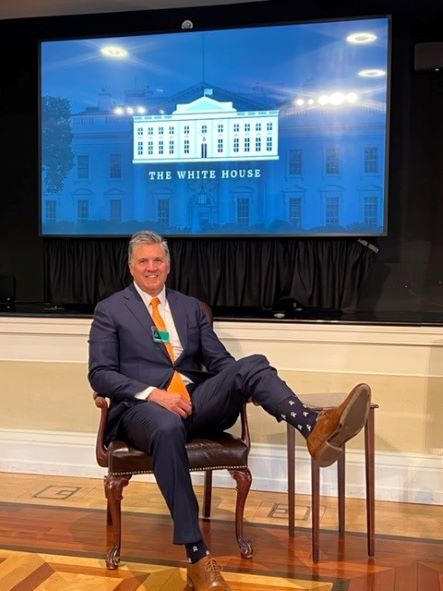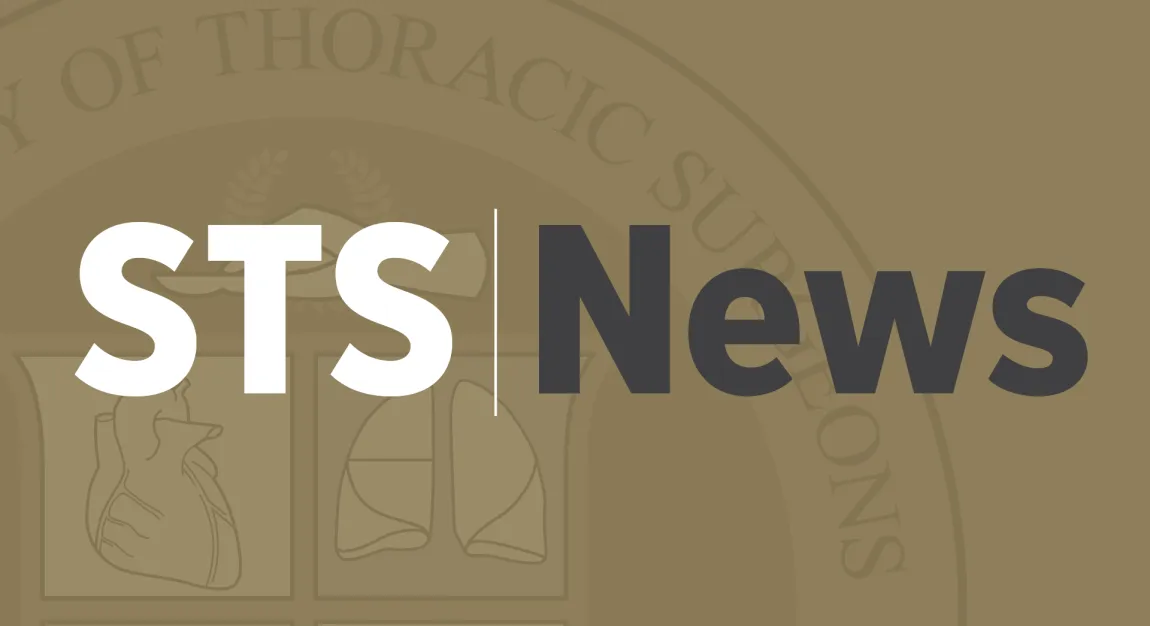STS News, Summer 2022 — Grassroots advocacy is action that grows organically from the heart of a constituency—its members. And, one of the most powerful types of this grassroots work is patient advocacy.
Meet two STS members who have taken patient advocacy to the next level.
The 2019 STS Key Contact of the Year, Rob Headrick, MD, MBA, from CHI Memorial Chest and Lung Cancer Center in Chattanooga, Tennessee, traveled to the White House in late spring to advise the Administration on the mobile lung cancer screening program that he started. The program, known as “Breathe Easy,” features a built-from-scratch bus with a portable computed tomography scanner and brings opportunities for early detection of lung cancer directly into the community. Learn more about the program and Dr. Headrick’s grassroots efforts in the Q&A below.
Former STS President Douglas E. Wood, MD, from the University of Washington in Seattle, has taken his patient advocacy to a global level, demonstrating that early detection of lung cancer can have a significant impact in reducing overall cancer mortality.
Dr. Wood chaired the Lung Cancer Screening Panel of the National Comprehensive Cancer Network (NCCN) when it was created in 2009. The panel was in the process of creating the first lung cancer screening guidelines when the National Lung Screening Trial (NLST) was published in 2010 (the trial was launched in 2002, and the initial findings were released in November 2010).
The NLST demonstrated that a lung cancer screening program could reduce lung cancer mortality by 20%. As Dr. Wood explained, until that point, lung cancer screening hadn’t been accepted as a screening modality and the NLST results “changed the conversation.” However, there was still considerable work to do to get patients access to low-dose CT (LDCT) lung cancer screening.
In December 2013, the United States Preventive Services Task Force (USPSTF) granted a B rating for lung cancer screening in adults aged 55 to 80 years who had a 30 pack-year smoking history and were currently smoking or had quit within the past 15 years. The B rating required that private insurance companies cover LDCT scans, but did not extend to Medicare beneficiaries.
A Medicare advisory panel advised against screening for Medicare beneficiaries, withholding early detection from those at highest risk for lung cancer. Dr. Wood helped lead a coalition of health professionals to work with Medicare administrators on the safe implementation of screening. In February 2015, Medicare issued a National Coverage Decision providing lung cancer screening as a covered benefit for Medicare beneficiaries.
The USPSTF updated its LDCT lung cancer screening recommendations in March 2021 to include adults aged 50 to 80 years who have a 20 pack-year smoking history, and Medicare followed a year later. Unfortunately, they both maintain an upper age limit and the requirement that eligible patients must currently smoke or have quit within the past 15 years.
Dr. Wood more recently worked with the President’s Cancer Panel on a report issued in early 2022 that highlighted lung cancer as one of the top four cancers of focus. He also is the vice chair of the National Lung Cancer Roundtable from the American Cancer Society, a consortium of public, private, and voluntary organizations that work together to fight lung cancer by engaging in research and projects that no one organization can take on alone.
In addition, Dr. Wood participates in the Lung Cancer Collaboration—a partnership between the World Economic Forum and the Lung Ambition Alliance. This coalition of patient organizations, scientific and medical societies, and industry—which shares the urgent ambition to double 5-year survival in lung cancer by 2030—developed a report that examined lung cancer as global public health issue. The report was presented to the World Health Assembly in May 2022.
More information, including important lung cancer references and documents, is available below.
References and Documents from Dr. Doug Wood
- A report from the President’s Cancer Panel—Closing Gaps in Cancer Screening: Connecting People, Communities, and Systems to Improve Equity and Access
- A report from the President’s Cancer Panel—Lung Cancer Companion Brief Lung Cancer Companion Brief
- About the American Cancer Society National Lung Cancer Roundtable
- World Economic Forum: Urgent, Coordinated Global Action on Lung Cancer
Q&A with Dr. Rob Headrick

How did you get invited to the White House?
We lobbied Washington, DC, and the Tennessee state government for funding to expand the mobile lunger cancer screening concept, but the pandemic put those efforts on hold. In 2021, we announced a partnership with the GO2 Foundation for Lung Cancer, AstraZeneca, Merck & Co., Inc., Bristol Myers Squibb, and a nonprofit foundation to expand the program.
This collaboration caught the attention of the Biden Administration and the Cancer Moonshot initiative, and we received an invitation to the White House to help highlight important public-private partnerships that are critical to achieving the Cancer Moonshot goal of decreasing overall cancer mortality by 50% over the next 25 years. It was the highlight of my career to have our many years of work recognized by the White House and used as an example for the type of partnership they are looking for.
What did you learn about the Administration’s work to advance lung cancer screening?
It was clear to all involved that the quickest way to make progress toward the goal of reducing cancer mortality by 50% is through screening. Lung screening is the biggest first step that will start improving overall cancer mortality rates—which is why the White House was highlighting our mobile program and its effort to reach at-risk rural and underserved populations. The Moonshot leadership recognizes the importance of supporting continued improvements in screening policy.
What is the latest on the mobile lung cancer screening bus initiative?
The next mobile lung cancer screening bus is currently in the build stage and will hopefully be on the road by January 2023. In order to provide further value to these high-risk patients, the bus will include continued advancements in screening technology such as artificial intelligence (AI), calcium scoring, and possibly bone density assessment. Reliability, remote connectivity, and throughput also will remain priorities in the design.
What innovations are there in the lung cancer screening space that STS members and patients should know?
Low dose lung screening is much more than just finding lung cancer early. This population also is at high risk for ischemic cardiac mortality. We already use non-gated calcium scores with each lung screening to help protocolize patient risk and make sure appropriate medications are being prescribed. Smoking cessation also is encouraged. There is an opportunity to reduce the cardiac mortality in this population by 30%—similar to the lung screening benefit.
In addition, so much data from these scans are not being used. For example, AI will play a role in our future by helping the radiologists read these scans and make better use of the data on the scans to improve the overall health of this population. We will become more efficient at predicting future risk for disease and focusing efforts to help mitigate that risk—all while staying within the low dose parameters and with a short single breath CT scan.
How can STS members get involved in supporting the mobile lung cancer screening initiative?
The Lung Ambition Alliance—with our help—currently is organizing an international mobile lung screening meeting that will feature all current mobile programs in the US (3) and United Kingdom (1). This meeting will allow those who are interested in developing such a program to learn from the existing programs and ask questions. We are hoping to have the meeting by the fall of 2022. It will likely be held in conjunction with one of the international lung meetings and will include a virtual option for those who cannot attend in person.
Mobile lung screening isn’t for everyone, but for many, it is a great way to find lung cancer at an early stage and educate patients in areas where geographic or economic barriers prevent patient engagement. We are always willing to talk with STS members about the business model, discuss how we set up our program, and organize site visits to see the bus.
